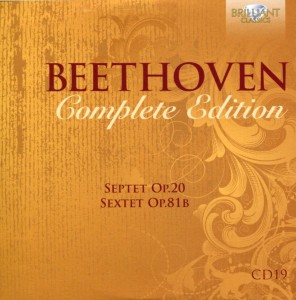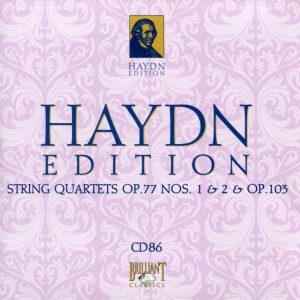 The first of the two compositions on today’s CD is Septet in E Flat Op 20, performed by Deutsche Kammerphilharmonie.
The first of the two compositions on today’s CD is Septet in E Flat Op 20, performed by Deutsche Kammerphilharmonie.
Septet, in case you’re not up on your German/Latin etymology, means seven. So this composition consists of seven instrumentalists.
According to its entry on Wikipedia, the Septet in E Flat Op 20,
was sketched out in 1799, completed, and first performed in 1800 and published in 1802. The score contains the notation: “Der Kaiserin Maria Theresia gewidmet”, or translated, “Dedicated to the Empress Maria Theresa.” It is scored for clarinet, horn, bassoon, violin, viola, cello, and double bass. It is in six movements.
So, Beethoven was 29 when this was “sketched out,” 30 when it was first performed, and 32 when it was published.
This piece of music may only have seven instruments, but it sounds very full, quite “heavy,” in a sense. Dramatic, for sure.
The second composition is Sextet in E Flat Op 81B, performed by Erben Quartet with Gerhard Meyer and Rudolf Horold playing the horn. (Sextet means six.)
According to an entry on the LA Philharmonic site, this piece was composed early, about 1795, but not published until 1810, which accounts for its high Opus number.
Beethoven was 25 was he composed this, and 40 when it was published.
It’s a solid piece of writing. But not much about it stands out for me, perhaps because it seems rather ponderous, almost lugubrious. It seems somber.

